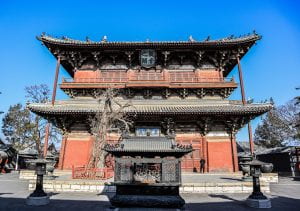Please join us next Wednesday for the first VMPEA event of this academic year, featuring:
Speaker: Nancy P. Lin
Klarman Postdoctoral Fellow, Cornell University
“Wildlife (1997-1998), a Multi-sited Art Activity”
Discussant: Ellen Larson
CAEA Postdoctoral Instructor of Art History, UChicago
Wednesday, October 26, 2022
4:45–6:45 pm CT, CWAC 152
For those who desire to attend remotely, please use this link to register for the Zoom meeting.
After registering, you will receive a confirmation email containing information about joining the meeting.
The password to this zoom session is 043582
 Catalogue for Wildlife: Starting from 1997 Jingzhe Day (1997-1998)
Catalogue for Wildlife: Starting from 1997 Jingzhe Day (1997-1998)
Abstract
Throughout the 1990s artists from all across China turned from creating works within the studio and museum context to working directly on-site in everyday spaces. Examining the year-long, multi-sited art project Wildlife (1997-1998) organized by Beijing-based artist Song Dong and featuring twenty-seven artists across seven cities, this paper explores how the activity brought these disparate art practices together to advance a discourse for the first time around the aims of working on-site. It shows how the experimental project promoted art practices that were intimately tied to everyday locales and audiences and how it pioneered new strategies for exhibiting and disseminating such site-based works to broader audiences across China. By examining works by participating artists as well as Wildlife itself as a creative work, the paper reveals the ways in which artists in the second half of the 1990s converged on an expanded understanding of on-site art practice as both thoroughly local and transregional.
**************
Nancy P. Lin is a Klarman Postdoctoral Fellow at Cornell University specializing in modern and contemporary Chinese art and architecture with a particular interest in the relationship between art and urbanism. Studying contemporary Chinese art through a transregional perspective, her current book project examines locally situated, yet globally oriented site-based art practices in China during the 1990s and early 2000s. It explores the aesthetic and socio-political stakes for how and why artists during this period began to work “on-site” in everyday urban spaces such as city streets, construction sites, and other unconventional locations. She is also at work on a new project that explores the history of performance art in China and East Asia. Incorporating materials from Cornell’s Wen Pulin Archive of Chinese Avant-garde Art, this project considers the documentary mediation of performance art and issues surrounding performative action’s (in)visibility, duration, and public impact. Lin’s publications include a forthcoming article in Art Journal, a chapter in the edited volume The Allure of Matter: Materiality Across Chinese Art (Smart Museum of Art, 2021), and an article in the Journal of Contemporary Chinese Art (Intellect, Winter 2021).
Ellen Larson is a Center for the Art of East Asia (CAEA) Postdoctoral Instructor in conjunction with the Department of Art History. Her research underscores the nature of temporalities as represented in moving image art made primarily in Mainland China. She is particularly interested in revealing how contemporary artists capture facets of accelerated time all the while living in a culture where physical environments and social connections are becoming increasingly obsolete due to major investments in robotics, AI technologies, online communication platforms, and virtual monetary exchange applications. Ellen’s research is also informed by urban studies, Asian futurisms, memory studies, and cyberfeminism studies. Her methodological approach to the study of art history incorporates curation and design as critical forms of applied practice. Before joining UChicago, she earned her PhD in art history from the University of Pittsburgh. Her doctoral dissertation, “On Time: Contemporary Chinese Video Art from China,” focused on emerging video and new media art since the turn of the new millennium. Her research has been supported by the American Council of Learned Societies, the Henry Luce Foundation, and the Dunhuang Foundation. She also holds a master’s degree in modern Chinese history from Minzu University of China (Beijing), where she completed all coursework in Chinese.

 Catalogue for Wildlife: Starting from 1997 Jingzhe Day (1997-1998)
Catalogue for Wildlife: Starting from 1997 Jingzhe Day (1997-1998)



